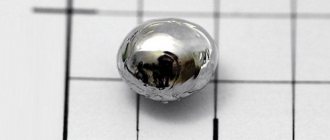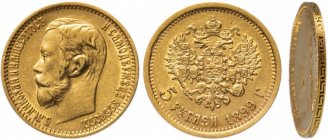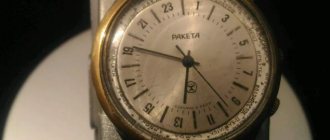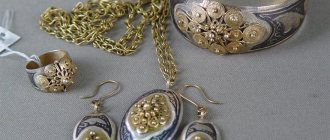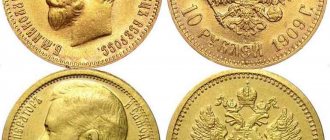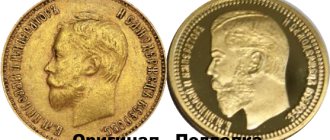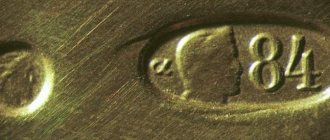Post updated: Jun 6, 2020
Gold is a noble metal that has enjoyed enormous popularity for many centuries. It is gold that is used as a component of the gold and foreign exchange reserves of countries; it is it that reflects the real value of paper currency issued in the country, which directly affects the stability of its economy and the country’s influence in the international arena. The price of gold is a biased concept, formed from a number of factors, which is why gold has become one of the bargaining chips in the game of the world's leading economies.
A banking specialist and a competent stock broker understands the process of price adjustment from the inside, while the average person often cannot even imagine why the price rose or fell. In addition, gold prices vary on trading exchanges, in state banks, in jewelry companies, and at points of sale of metal to the public. This complex system is most often perceived by citizens as a given, which is useless to predict, but is it so? Only partly. Knowing how much gold costs, you can draw a number of conclusions about the economic and political situation in the world, the stability of the banking system of your state and the state of affairs at gold mining enterprises.
- Pricing
- Quotes and exchanges
- The price of gold within the state
- Retrospective
- Prices for gold of a certain standard
- Pawnshop
- Banks and long-term investments
Pricing
The price depends on a number of factors. Let's remember the properties of gold and its history. There is not much of this precious metal on the planet; most of it has already been mined. It is scattered throughout mountain gorges, in ore veins, in gold-bearing sand, at the bottom of mountain streams and the ocean. Its extraction requires enormous strength, experience and modern equipment. Gold is a finite resource, so the less of it left on the planet, the more expensive it will be. Thus, the first pricing factor is the amount of metal mined per unit of time (for example, a quarter or a year). It is significant that in addition to gold and foreign exchange reserves, states have also taken into account the country’s GDP since 1970 - that is, the turnover of manufactured products and exports. This is due to the fact that there will no longer be enough pure gold on Earth to cover the entire paper currency of all countries.
Another important factor is demand. The higher the demand, the more expensive the product, in this case, gold. It is worth noting that mining companies sometimes play with the market, hiding the true volume of gold production in order to provoke a shortage and a discrepancy between inflated consumer demand and supply. Using this simple method, you can plan to raise the price of gold on the world market. Demand is generated by the largest buyers - jewelry houses and industrial enterprises that need gold as a raw material for their work, as well as investors. Large companies, owners of real estate, valuable assets and large savings in difficult and unpredictable economic periods prefer to transfer savings into gold, since it has not fallen significantly in price even once over the past half century. A surge in gold purchases on international exchanges is immediately reflected in the general price indicator - the quotation.
Plunder of the USSR
— In 1987 US foreign debt increased to $246 billion October 19, 1987 Wall Street crashed catastrophically! In the current situation, only a miracle could save the United States. And a miracle appeared in the form of Gorbachev. Gorbachev surrendered all positions of the USSR in the military and political arena - starting with the dismantling of nuclear parity. (With)
But, I will add, Gorbachev also ruined the economy of the USSR. In January 1987 Restrictions on foreign trade were abolished - those restrictions that protected the domestic market of the USSR from collapse. For without such restrictions, the domestic market of the USSR could not last even one day - with its huge disparity in prices for food and consumer goods in relation to the external market.
And suddenly, enterprises and individuals were allowed to export abroad all scarce goods - food, raw materials, electronics, energy, chemical products - in a word: everything, everything and everything! By resolution of September 1987 such export became obligatory and compulsory.
It was as if a powerful hurricane swept over the vast territory of the USSR and instantly sucked all material values from the country.
The shelves of grocery and department store stores are empty. ROBBERY OF GOLD RESERVE
July 21, 1989 new Customs rules lifted all restrictions on the export of gold and precious stones from the USSR. Seventy years of work of Soviet customs was destroyed in an instant. Gold was released onto the domestic market on a hitherto incredible scale, and then, purchased at domestic USSR prices, exported overseas.
“Moskovsky Komsomolets” described the jewelry trade in those days:
- “A vivid picture of excitement, raging elements, repeated fulfillment of the quota for the sale of jewelry at the expense of Gokhran... Storming the counters, bombarding Gokhran with letters demanding new supplies of gold and precious stones...” -
These are just a few words from an article with an expressive headline: “WHERE IS THE TSUNAMI GOING?”
“Izvestia” then demanded to combat queues for gold and diamonds: “To use such a powerful reserve as the State Gold Reserve.”
“Soviet Culture” called for the removal of such a barrier to the export of gold as customs altogether: see “Borders without Locks,” 08.25.90.
After some time, G. Yavlinsky alarmed the press with a statement about the disappearance of gold reserves. But it quieted down pretty quickly. How much gold was exported?
Was it profitable to export gold?
One gram of gold in those days cost approximately 50 rubles in the USSR. At the same time, on the world market, 1g of gold cost 13 dollars (AiF, No. 8, 1990). What kind of profit did those exporting gold and precious stones receive?
Now the prices of gold and precious stones have exceeded all conceivable limits. So how fat has the West become just due to gold exported from the USSR?
T. Karyagina discovered “black holes” in the USSR economy only in October 1988.
exported 500,000 color televisions and 200,000 washing machines abroad
Only one foreign family was taken out only in 1988. : 392 refrigerators, 72 washing machines, 142 air conditioners. And employees of only one of hundreds of thousands of foreign organizations -
1400 irons, 138 sewing machines. 174 fans.
And also: 3,500 bars of soap and 242 kg of washing powder - the same ones that, at the insistence of the people's deputies, were allegedly purchased for the Soviet people for foreign currency.
This is data that was accidentally leaked to the press at that time.
Only through one of the darkness and darkness of the customs of the USSR were private individuals exported in 1989 alone. over 2 million tons of scarce goods.
The products of the Krasnoyarsk cotton mill were completely exported: (“Who benefits from the commodity shortage?”, “SR”, 03.13.90). A good sheet in those days cost 5 rubles, a duvet cover - 8 rubles.
Even Izvestia was saddened in those days by the fate of the country: Article “On prices, money, and social justice”:
— “Our prices for government products are, as a rule, lower than market prices. But this does not mean that it is cheap for us. At the same time, no one knows how many of the highest quality and cheapest things, precisely because of quality, do not reach the counter and float away to God knows where. And how many criminal millions are made from these deficits.” (May 22, 1990).
And even AiF responded with an article: “ Where are the chintz and brocade?”
— “After 1985. a hitherto unprecedented export boom began:
supplies of fabrics abroad have increased more. than 3 times. Cotton - almost 4 times, Linen - 7 times.
Foreign trade began to turn into a destabilizing factor in the domestic textile market.”
Moreover, AiF talked only about state exports. But private exports far exceeded government exports!
Moreover, it was impossible to establish the size of exports: The same “Izvestia” wrote at the same time: “Our country is one of the few in the world where customs statistics are not kept.”
What is the “Baltserovich miracle” that various “experts” talk about?
American experts suggested that Baltserovich curtail production and normal trade, and encourage small-scale trade in every possible way.
Those. declassify the working population and turn it into a “nation of speculators.”
And all these declassed elements - millions and millions - swooped on the USSR like locusts and began to export everything they could snatch - from imported furniture to tubes of toothpaste - in tons.
In those days, at the Congress of Deputies there was a terrible scandal and cries about the lack of toothpaste.
It didn’t even occur to the tearing-out people’s deputies to think about the reasons for this absence. They easily decided to purchase $60 million worth of toothpaste abroad.
Who did these 60 million enrich?
In France, where it was brought from, eubna paste cost 15 francs. In the USSR it was sold for 1 ruble. Of course, all this paste, worth $60 million, ended up abroad again in an instant. It was sent to Poland in parcels of 500 tubes , but the number of such parcels - directly in the factory French packaging (!), was not limited. These packages were taken out in whole trunks of cars. Entire train compartments. Containers on the decks of ships.
French perfumes were exported in boxes - 40 rubles per bottle on this side of the border - and 80-100 dollars on the other. Then through Poland they were transported to Germany and further - but at European prices.
They dragged everything and, like ants leaving a bare skeleton from the powerful body of a lion, these “Baltserovich’s piranhas” left empty shelves for the Soviet people. There is not a single item of consumer goods - from food to equipment - that would not be exported.
Our magnificent fabrics were exported:
Other source:
"Leningradskaya Pravda", 1992:
- "In the USSR by 1990-91. 38 meters of fabric per person were produced annually. Of these, 75% of the world production of linen fabrics, 16% - wool, cotton - 13%, and silk - 12%.
Only officially (i.e. by the state and the joint venture) 50% of linen and 42% of woolen fabrics were exported.”
But these figures do not take into account the export by individual individuals: And they, like locusts, exported everything they managed to snatch! Those. the export was total - 100%!
Products were exported.
Oil removal:
The USSR produced 21.4% of the world's butter production. (the population of the USSR was 4.88% of the world).
Butter production continued to increase, but as a result of its export, coupons appeared for it. There was 26% more butter per inhabitant of the USSR than in Great Britain. There were no deliveries of butter to the UK, but it was present in London stores.
Soviet butter was not supplied to Africa, for example, to Epiopia, but it was sold in Addis Ababa. And, of course, four times more expensive than in the USSR.
Export of meat:
Meat
Meat production in 1991 was 11.7% of the world level.
Meat consumption in the USSR was 668 thousand tons less than its production. However, things were much worse. This is official statistics data... This is the statistical trap of those years.
Statistics considered all the butter and meat that was sent to warehouses for food stores to be consumed INSIDE the USSR.
When selling butter and meat, no one required passports, and therefore they, bought in the USSR, but taken outside its borders, supposedly increased the well-being of the Soviet people.
But many tons of butter and meat intended for trade left directly from warehouses, bypassing stores, and were exported outside the USSR - by containers by sea, by trains and vehicles by land, and by plane by air.
And statistics believed that the Soviet people devoured all this.
Why are capitalists still screaming that Gaidar “saved the country from hunger”?!
Because he raised the prices for the same oil so much that it became unprofitable for small speculators to export it. (small ones were small, but there were tons and tons of them - like locusts).
Pavlov tried to raise prices for some shortages by a fraction of a percent - what a high it went up!
That is, total export, in addition to ruining the USSR, was one of the mechanisms that brought the Gaidars and Shakhrais to power.
In the late 80s - early 90s everything disappeared:
Socks and refrigerators, furniture and irons. TVs and dishes, sheets and washing machines! Sausage and fish, sugar and cereals - everything was devoured by the swooping locusts! Aluminum pots, bowls, and spoons were exported as cheap and valuable raw materials that had already undergone the most energy-intensive and environmentally polluting stage of processing.
Export bugs ate the once powerful ship of the Soviet economy to pieces!
And in 1991 he collapsed!
Tatiana Yakovleva
- After the collapse of the USSR in Russia, they stole from 10 federal budgets
- Five things for which we never thanked the USSR!
- They convince us that life in the USSR was hopeless
Quotes and exchanges
The reference point for the price of gold will always be the London Metal Exchange. Every day the exchange holds two sessions, in each of which a quote is set for each of the trading lots. States around the world use these indicators as the basis for shaping their national policies. This system allows you to bring the economy of the whole world to the same denominator. You can track the current price of gold in dollars per troy ounce, established on the London Stock Exchange, in the chart below:
The price of gold within the state
Only stock brokers can purchase and sell gold and other assets at quoted prices, and all transactions within the country are carried out taking into account the price set by the central bank. This is the largest organization that owns 50-70% of the country's gold reserves, so it is of great importance for the national market. The price can be adjusted down or up, it depends on the state’s intentions to accumulate a gold reserve (which is necessary, for example, after a crisis and a reduction in gold reserves in order to prevent the national currency from collapsing) or to waste it by distributing it among private individuals in cases of stable position of one's own currency.
When purchasing bullion, investment coins through a bank or opening a deposit in gold, you should take into account the state commission - VAT, which is 18%. Unallocated metal accounts do not provide for such a tax, which makes them more preferable. You can see the exchange rate of the Central Bank of the Russian Federation for gold in the chart below. The cost is indicated in Russian rubles per gram of yellow metal.
Stalin's gold ruble project
Stalin once said that there would be no financial or other independence for a socialist state that tied its money to foreign capitalist currencies.
Brief historical background
By the summer of 1941, the entire gold reserve of the Soviet Union was in its homeland and was measured at 2.6 thousand tons. Only thanks to this, by August of the same year, the country received strategically necessary supplies of materials and weapons from the allies in the war with Hitler - the United States and Britain. The second year of the war was marked by the USSR's entry into the Lend-Lease program, in which 27 countries of the world participated economically.
At this point, the Soviet Union developed the most powerful gold mining industry, producing more than 100 tons of the yellow metal annually. Its production entered the strategic sphere of state interests and was classified. This direction was personally supervised by Beria, the head of the NKVD. 70% of all gold was mined by prisoners and civilian workers of the Dalstroy association near Magadan on the Kolyma River. All precious metals were unconditionally transferred to the state.
Since 1937, the USSR ruble was pegged to the US dollar, and the value of gold was also measured in US currency.
Your own Soviet gold ruble
The Central Department of Statistics of the Soviet Union, fulfilling an urgent order from Stalin, at the end of the winter of 1950 recalculated the ratio of the new ruble to the dollar. The comparison was carried out based on purchasing power, and the most advantageous commodity items for the USSR currency were selected.
Thus, in the outerwear category, the cost of good-quality US gabardine coats and repainted Soviet military overcoats was compared. In the footwear category - leather boots and tarpaulin army boots, etc. It was assumed that USSR goods initially had better quality and durability. An adjustment of 15% was added to the results to compensate for fluctuations in dollar value. The result was the ratio of 1 American dollar to 14 Soviet rubles.
According to the testimony of high-ranking eyewitnesses present, Stalin crossed out the numbers provided and imposed a resolution - “No more than 4 rubles.”
The very next day, 02/28/1950, a government decree was issued establishing the backing of the ruble with gold in the amount of 0.222168 grams per unit and the cost of the yellow metal itself at 4.45 rubles per 1 gram. Approving this document, Stalin commented that America had accumulated during the war years and later printed an excess amount of paper dollars, which it would now get rid of by any means, which must be prevented.
Here is a brief summary of the government decree published in the Soviet press on March 1, 1950. It said that inflation continues to rise in the West, the cost of essential goods is increasing, national currencies are being devalued and their purchasing power is decreasing. The described factors contributed to the fact that the official value of the ruble decreased in relation to its real purchasing power. Therefore, it was decided to raise ruble quotes and link their exchange rate to gold. The decree prescribed the following directives:
- Stopping the calculation of the ruble exchange rate based on dollar and other foreign currency quotes and taking as a basis only the prescribed gold backing of the Soviet ruble.
- Determination of the correspondence of 1 Soviet ruble to 0.222168 grams of yellow metal.
- Setting the purchase price of 1 gram of physical gold at 4.45 rubles.
- Determining the price of the Soviet ruble in relation to foreign currencies in terms of metallic gold at the level of 4 rubles per US dollar instead of 5 rubles 30 kopecks and 11 rubles 20 kopecks per British pound instead of 14.84 rubles.
- Instruction to the State Bank of the Soviet Union to recalculate the ruble ratio to other foreign currencies.
Further, the State Bank was instructed to monitor quotes of foreign currencies in relation to gold and make corrections to the ruble exchange rate. The leader insisted on strict regulation of the ruble exchange rate to achieve economic and social stability within the country. He said that there would be no economic and political independence and prosperity in a socialist country that tied its money to capitalist, foreign currencies. As an example of long-term financial dependence on Western countries, Stalin cited the Yugoslav state, which tied its money to a dollar-pound currency “basket.” He believed that sooner or later Britain and the United States would collapse the economy and divide the territory of Yugoslavia. As history has shown, the “leader” was right.
Countries of the Council for Mutual Economic Assistance and their gold international currency
Similar transformations were carried out in all states of the socialist camp, this made it possible to agree on a common financial and exchange rate, also regarding the introduction of the gold ruble as an interstate means of payment. Already at that time, the formation of the Council for Mutual Economic Assistance (CMEA) had begun. In the winter of 1949, this included most of the states of Eastern Europe with the exception of Yugoslavia. A year later they were joined by Albania and East Germany. A little later, unified foreign trade statistics and commodity classification were introduced among the CMEA participants.
In the spring of 1952, the leaders of Eastern European countries, China and the Soviet Union gathered in Moscow for an economic meeting, where they discussed a proposal to create an alternative trading zone in the world that did not use the dollar. The initiative has attracted strong interest from the Iranian, Ethiopian, Argentine, Mexican, Uruguayan, Austrian, Swedish, Finnish, Irish and Icelandic governments. Stalin put forward a proposal to form a common market with a new interstate currency, which could become the gold Soviet ruble.
Such a new world currency could be called differently. For example, Stalinist gold ruble, Stalinets, Russian or Soviet ruble, etc. Throughout Russian history, we have already had similar internationally recognized money, such as the Zlatnik from the time of Prince Vladimir, the Golden Chervonets of Nicholas II and the Golden Sower issued under Lenin. Consulting with the leaders of the Chinese and Mongolian governments in 1951 in Moscow, I.V. Stalin said that after the national currencies of the CMEA countries are transferred to a gold basis, the introduction of a gold monetary equivalent for settlements in mutual trade will become relevant. For this purpose, a special international commission was established, which included: from Hungary - Rakosi, from Czechoslovakia - Gottwald, from the GDR - Grotewohl, from China - Zhou Enlai.
Over the years 1952-1953, as many as five options were developed for the transition when making payments between socialist states to a currency pegged to a gold base instead of the dollar. The introduction of the new unit of account into use was planned from 1955 to 1960. Stalin preferred the first closest date, but he was objected that the transformations should be preceded by economic growth, the unification of economic and social planning systems and an increase in the purchasing power of the state currencies of the socialist countries. Shortly before his death, Stalin approved the deadline for the currency transition to 1957, coinciding with the 40th anniversary of the October Revolution. He was afraid that important transformations would be buried without him, and this later happened.
The leader was aware that Western countries, led by the United States, would certainly oppose in every possible way the introduction of an alternative world currency to the US dollar. This is what happened. To weaken the Soviet Union and prevent the spread of Stalin's gold ruble, the war in Korea was imposed on the socialist camp, which began in the summer of 1950 and took up a significant part of the resources of the socialist countries. In this war, the Americans themselves lost about 1,000,000 people captured, maimed and killed, and also spent $20 billion on weapons, supplies and military infrastructure. But the United States achieved its main strategic goal - to prevent the emergence of a new gold currency of international significance as an alternative to the dollar.
The Korean War ended after the death of I.V. Stalin. The new party leadership of the country that came to power changed the economic course to a pro-Western one. But then Vietnam, the Democratic People's Republic of Korea, China and Mongolia were already ready to join the CMEA. Khrushchev again pegged the ruble to the dollar, considering the idea of gold backing the national currency irrelevant. Instead, an obscure reform of the agricultural industry began, the fight against private plots and personal gardens, and the oppression of religion. As a result, catastrophically dry and cropless years forced the state to exchange Soviet gold for American bread.
In just a few years, the Khrushchev government squandered gold reserves of 2.9 thousand tons. Thus, the Golden Stalinist ruble was finally buried, along with the idea of a new international currency alternative to the dollar. There simply was no more gold to back them up. Khrushchev's failed policies prevented state gold reserves from reaching 3,150 tons by 1964. But this is the entire volume of the yellow metal that was owned by the IMF according to data for 2010.
The metallic gold reserve of the United States, located on its soil, amounts to 8133.5 tons of the precious metal. Today's Russian ruble is still pegged to the paper US dollar instead of physical gold, as it was under Stalin. For the needs of its own economy, the United States is printing more and more new green pieces of paper, because of which the ruble continues to catastrophically lose weight.
A couple more interesting facts about Stalin’s coins
Among the many mysteries that Stalin left behind is the trial issue of gold and silver coins in 1953. Whether these were experimental options for a new design or whether this was how the monetary reform was being prepared, we don’t know. There is no documentary evidence on this issue. The last exchange of money was only five years ago in 1947, so unlikely. But several variants of this trial design were used in Khrushchev’s monetary reform of 1961, when 50-kopeck coins, which had not been issued since 1927, came back into use.
At an auction of the Empire trading house, one of these experimental, unapproved options recently surfaced - a 1953 50-kopeck coin made of aluminum alloy. A copy was purchased for 480,000 rubles. Later, a similar copper-nickel coin was purchased at the “Coins and Medals” auction for 1,000,000 rubles.
Retrospective
As you know, all the states that are now part of the CIS and the Baltic states were members of the Soviet Union. The price of gold until 1970 was one of the most stable parameters in the world. The US government ensured that the price remained within $35 per troy ounce. Between 1935 and 1970, US gold reserves declined rapidly and it was soon decided that the dollar would no longer be backed by gold. Since 1971, the price began to rise sharply. However, after a jump in prices, they began to decline again and reached $330 per troy ounce in 1985.
However, how much gold cost in our country was not determined by the world market. In the USSR, the cost of gold was approximately 50–56 rubles per gram, with a purely Soviet 583 standard, and the cost of pure gold reached 90 rubles per gram. Considering that on the “black” market one dollar cost 5-6 rubles and the cost of 1 gram of gold “there” did not exceed $1.28 until the 70s, you can understand the scale of how inflated the price of the yellow metal was in the USSR .
On the world market, the price fell until 2000, which was due to the collapse of the USSR and the rise of the dollar, which is still an indicator of the movement of the price of gold on the market (the dollar rises - gold falls). After 2001, gold prices soared to unprecedented heights.
45-year record for precious metals prices: 1971-2016. Part two
See the first part of the material on Goldenfront here .
In last week's reflections, I traced the history of gold, silver, and the U.S. dollar from the establishment of the national monetary system in 1792 to the end of the gold standard in 1971. Today I will look at the paradigm of our time, beginning in August 1971, when Nixon stopped converting the US dollar into gold for foreign governments. Then the dollar was devalued twice, in 1972 and 1973.
Since that time, gold and silver prices in US dollars have floated freely in all precious metals markets, including physical metal, paper instruments and derivatives such as options and futures.
Here is a graph of the average monthly price for each metal and the gold-silver ratio since August 1971:
Gold/silver ratio
Let's look at the 45-year history of metal prices and price relationships. There is strong variability in the relative prices of the two metals.
The official price of gold increased following the devaluations of the US dollar in August 1971, August 1972 and March 1973. The last ruling finally ended Bretton Woods, and the US dollar, other major world currencies and gold began to float freely relative to each other.
Following these devaluations, the price of silver rose at about the same rate as the price of gold. From 1972 to 1973, the price of both metals more than doubled, and the gold-silver ratio averaged 30 during this period.
The Arab-Israeli War of 1973 and the subsequent OPEC oil embargo, rampant inflation and economic recession, all caused the price of precious metals to soar. The price of gold averaged $160 per ounce for two years, and the price of silver, having passed $4.00, remained above that level for the next 17 years. The price ratio in 1974-1975 approached 40.
However, gold was overbought and a correction occurred at the end of 1975. The price of gold remained low for about a year and a half, and the gold-silver ratio plummeted to twenty-five or more.
Gold and silver rose steadily through 1978 and into early 1979, when the price of both metals soared in the late summer and fall. The peak occurred in late January 1980, and gold's daily closing price of $850 an ounce held for 29 years, while silver's daily closing price of $49.45 an ounce remained an all-time high.
Those estimates were metaphorical bubbles. The rise in gold prices was driven by the Iranian hostage crisis, the Soviet invasion of Afghanistan, another OPEC oil embargo and double-digit inflation. Silver followed, but this was also facilitated by the speculative attempt of the Hunt brothers to monopolize the market.
When the price of silver soared in the first two months of 1980, the gold-silver ratio averaged no higher than 20:1. Since the end of the gold standard, this is the only time the ratio has been less than 20.
The Hunt brothers' bubble burst in March when they failed to meet margin calls; the price of silver fell sharply, briefly falling below $6.00 an ounce in June 1982, when the Au:Ag ratio jumped to 56. But by mid-1983, the price of silver more than doubled and the volatile ratio returned to around 35.
Shortly thereafter, a bear market in metals began, with gold falling from nearly $500 in early 1983 to more than $300 two years later, after silver had fallen more than 60% in less than three years. Ratios rose from 40-plus at the end of 1983 to 70-plus by the end of 1986.
Gold has returned above $400, and silver traded between $6.00 and $7.00 in 1987 and 1988; the price ratio remained mostly above 60. Interestingly, the price of gold was not affected by the stock market crash of October 1987, but silver lost 12% in value for the month.
At the beginning of 1989, the prices of both metals sank, with gold again falling below $400 per ounce. The price remained weak over the next nine months, mostly at $350.
Meanwhile, the gold-silver ratio soared as silver prices plummeted, trading mostly below $5.00 an ounce from mid-1990 to early 1994 and below $4.00 from July 1992 to April 1993. During this period, land-based silver supplies far exceeded demand.
The highly anomalous Au:Ag price ratios in the 80s and 90s lasted for almost three years, from September 1990 to November 1993, and reached a zenith of 97.3 in February 1991.
This high level of ratios over 80 was repeated only twice: in May 1995 and last month.
Gold remained steady in the mid-1990s at a low of around $350 and silver at $5.00 an ounce. The scandal involving Canadian exploration company Bre-X in May 1997 devastated the Vancouver Stock Exchange and eventually led to its closure, but had no impact on precious metals prices.
The gold-silver ratio remained high but gradually fell to the low 70s and then to the low 60s in November 1997.
However, a month later, in December 1997, the ratio dropped below 50:1, when gold fell below $300 in a month for the first time since August 1979. It was part of a broader bearish cycle that began with oil and then spread to other mining and agricultural products. The catalyst was the decline of the Thai currency as severe economic problems affected other emerging markets in the region. These in turn infected the developed world, and the financial crisis became known as the “Asian contagion.”
Gold bottomed out at $260 in April 2001 and remained below $300 an ounce until April 2002. During this period of low prices for all commodities, the price of silver averaged $5.00. The price ratio rose gradually from below 50 at the start of the bear market until the mid-60s when gold emerged from its doldrums in mid-2002.
After that, the biggest bull market in history began. Gold soared from $303 in April 2002 to a record of $1895 per ounce on 08/06/2011. But note that it took 29 years for the previous high of $850 an ounce in the early 1980s to be surpassed.
Other commodities followed gold's bullish trend in 2004 and 2005.
During gold's bull run, a correction or even a halt in growth was rare, with the exception of the general economic crisis from August 2008 to January 2009.
In this overall scenario, silver underperformed during the first leg of the bull market; the ratio rose sharply in the 1970s and was high for more than a year. When silver prices rose in late 2003, the rise was impressive: the average monthly price was above $19.50 an ounce, and the ratio dropped to an average of 50.
With nearly all commodities hitting all-time highs in the first half of 2008, the global banking crisis sent markets lower starting in August.
Silver is always more volatile in high and low markets, and this was especially true in late October and early November. When gold closed at $720, silver was at a low of $8.88 and the daily price ratio was 81.1. In the fourth quarter of 2008, the ratio averaged 78.
At the same time, both metals had a jump down, but they quickly recovered due to purchases, with a flight to gold as a safe haven. Silver trailed gold, and the ratio soon dropped to over 60.
The price of the yellow metal exceeded $1,000 in September 2010 and continued to rise. Silver rose exponentially and the ratio fell continuously throughout 2011, reaching a low of 35 in April when the silver price averaged $42 per ounce for the month. The closing price peaked at $48.70 on April 28, 2011.
During this time, smart investors sold most of their silver holdings for real money (gold), knowing that exponentially rising markets are always parabolic.
Gold's rise, although steady, has not been as dramatic. It reached its all-time high of $1,895 in September and averaged $1,772 for the month. The price ratio rose again as silver predictably stumbled. After peaking in April, silver lost 27% through the end of the year.
The market has been volatile for both metals since late 2011, with the ratio remaining above 50 until March 2013. In April, the first of a series of corrections ended the 10-year bull market in precious metals. Typically volatile silver continued to rise in percentage terms and the gold/silver ratio rose to over 60.
By July, gold was trading at almost $1,200 and silver at almost 20 bucks. Both metals traded through lower lows and highs until the end of 2015, when gold averaged $1,068 an ounce and silver averaged $14.05, a five-and-a-half-year low.
The Au:Ag ratio has continued to rise over the last five years due to the weak silver market. By October 2014 it was in the 70s, and in March it reached a 21-year high of 80.8.
Gold ended 2015 at $1,062 an ounce and then predictably began its January rally, closing at $1,112. The rally continued until mid-March, and since then the price has remained in the $1,200-$1,250 range. This three-month rally reversed the above 4.5-year trend, suggesting the end of the gold bear market.
Additionally, gold surpassed its 200-day moving average in early February, and its recent consolidation point is well above this bullish reference point.
Meanwhile, silver remained subdued until the rally of the past two weeks, reversing a five-year trend of consistently rising gold-silver ratios. Average prices in April were $1,243 for gold and $16.02 for silver, for a ratio of 77.6.
The strengthening price of gold and the continued rise in the price of silver confirm that market sentiment towards precious metals is turning positive. Time will tell, but there is evidence that better prices for precious metals are ahead.
I've written many words on this history of gold and silver prices and price relationships in the roughly 45 years since the United States (and therefore the world) went off the gold standard.
But what are the long-term consequences of an unsecured monetary system?
After abandoning the gold standard, we were left with a basket of fiat currencies, substitutes for real money. History has proven time and time again that all governments, city-states, countries or empires eventually devalue their currencies to the point of being completely worthless, and the world economic system collapses into chaos.
We saw almost this scenario in the late summer and fall of 2008, the banksters saved the system until next time. Their decision, however, gave birth to today's economy of unserviceable debt, serial bankruptcies, negative interest rates, deflation, and devalued currencies.
Many of us understand that today's global economic paradigm is unsustainable and collapse is inevitable. Some experts are saying that this economic Armageddon is inevitable.
But my point is that no one can predict when this will happen. Those who try to do this are likened to fundamentalist religious fanatics who determine successive dates for the end of the world.
As you understand, I find it difficult to believe in their fatalistic dogma.
Here's what I know: gold is real money, and owning it will keep you rich no matter what economic disaster hits you. I have a stash and I believe you do too.
PS In addition to gold, it is good to have weapons, fuel and food.
Prices for gold of a certain standard
Everyone has thought about how much their wedding ring or grandmother’s earrings are worth now; gold, in any case, remains a valuable investment, an investment. Calculating the cost in the banking system involves working with pure gold - bars and coins of 24 carats or, in other words, 999 fineness. There is even the purest sample, called “five nines” - 99.999. Alloys are used for jewelry, since gold itself is too soft - it does not hold its shape well and is easily deformed. Alloys may contain silver, copper and many other impurities, but in smaller quantities. You need to be guided by the sample marking, which is on each product.
It shows what percentage of the metal is pure gold, which is valued above all else. To carry out the calculation, you need to find out the gold rate for today according to the Central Bank of the Russian Federation. The cost per 1 gram of gold will need to be multiplied by the fineness value. For example, if you have a 585 gold item, you can multiply X by 0.585 and get the value of 585 gold today. For example, with a price for August 2015 of 2353.01 rubles per gram, the cost of a gram of such a sample will be approximately 1376.5 rubles. However, this indicator is imprecise and depends a lot on the product itself and how it will be valued: as jewelry or gold scrap.
The fate of gold after Stalin
After the reign of Khrushchev N.S. There were a little more than 1,500 tons left in reserves, and after Brezhnev, stocks fell to 400 tons. But Andropov Yu.A. was able to increase reserves and almost doubled them. The most severe blow to the state gold treasury was dealt by M.S. Gorbachev.
By the year 91 of the last century, the gold reserves of the USSR amounted to about 300 tons and, together with all debts, were transferred to the management of Russia. A promise was made to increase the stockpile to almost a thousand tons, but the new government ultimately accepted only just over 350 tons of gold.
Pawnshop
Establishments that buy jewelry from citizens are called pawnshops. Here you can sell a chain, ring or earrings, or leave them as collateral after receiving a loan. The cost of your product will be calculated at the rate set by the pawnshop today, taking into account the condition of the product (no scratches, damage) and its artistic value.
Banks and long-term investments
The price of gold is quite unstable, but its growth still gives hope for the prospect of investing in this precious metal. Banks provide various opportunities for purchasing gold. You can open an impersonal account, which additionally gives a certain percentage for storing gold on deposit. You can buy a bullion and open a cell in a bank to store it. The method allows you not to be tied to a specific bank and when closing your account you can simply pick up your bullion. Another good way to invest is investment coins.
They can be stored at home, in a safe, or they can also be given as a gift. Every year, banks issue coins of various weights and models that can be purchased by anyone. The value of such a coin can be significantly higher than its weight in gold. This is due to the development of a unique design, the complexity of the design, the application of additional decorations and holograms. Such coins are collectible and it will be more profitable for collectors to resell them. Some coins are issued in very limited editions and this makes them much more attractive to buyers. If you received an old coin in poor condition, then you can only sell it as scrap.
Gold prices have reached sky-high levels in recent years, but have stopped rising at the moment. This trend gives hope that the economic crisis will gradually ease, giving way to stability. Surges in the rise and fall of prices in the market are almost unpredictable for those who do not know the formulas for calculating the mutual influence of exchange rates, who do not know the state of the economy of the leading countries, the chronicle of events over the past day, and the volume of metal purchased by investors.

